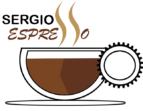## Doubling Uber Pool Revenue: Acing Your FAANG Product Management Interview
This guide will equip you with the knowledge and framework to tackle a common product management interview question: **How will you double Uber Pool revenue?**
Introduction
Product management interviews at top tech companies like FAANG often involve challenging questions that demand structured, analytical, and creative thinking. Revenue optimization is a core responsibility for product managers, and this guide will help you navigate such questions using a systematic approach.
Framework Application
We’ll utilize a modified version of the CIRCLES Method™, a framework from “Decode and Conquer” tailored for product design and improvement questions. Here’s how to apply it to doubling Uber Pool’s revenue:
1. Comprehend the Situation:
- Clarify assumptions about Uber Pool’s current state:
- How does it work?
- What is its current revenue?
- Who are the primary users?
2. Identify the Customer:
- Determine the target customer segment for Uber Pool.
- Understand their needs, preferences, and pain points.
3. Report the Goal:
- Define “doubling the revenue” in numerical terms.
- Establish time frames and key performance indicators (KPIs).
4. Cut through the Problem:
- Break down the revenue model into components:
- Number of rides
- Pricing per ride
- Utilization rates
- Analyze each aspect to identify growth opportunities.
5. List Solutions:
- Brainstorm solutions across marketing, operational efficiency, and product enhancements.
6. Evaluate Trade-offs:
- Weigh the pros and cons of each solution, considering costs, feasibility, and impact.
7. Solve and Summarize:
- Select the most promising solutions and synthesize them into a coherent strategy.
Example:
**Comprehend the Situation:** Assume Uber Pool currently makes $100 million annually, primarily from urban riders seeking cost-effective travel.
**Identify the Customer:** The primary users might be young professionals, students, and environmentally conscious riders who are price-sensitive.
**Report the Goal:** Set a clear goal to reach $200 million in revenue within 2 years, focusing on increasing ridership and improving margins.
**Cut through the Problem:** Identify underutilized routes with high demand potential or off-peak hours where incentives could increase rides.
**List Solutions:** Consider strategies like dynamic pricing, enhancing the match algorithm, targeted promotions, or a loyalty program.
**Evaluate Trade-offs:** Dynamic pricing might maximize profit per ride but could alienate cost-sensitive users, while targeted promotions could boost ridership but reduce margins.
**Solve and Summarize:** Develop a multifaceted approach that includes refining pricing models, expanding service areas, and implementing a referral program for new users.
Effective Communication
- Be concise and articulate your thought process clearly.
- Ask clarifying questions to understand the problem space.
- Use data points to back up your assumptions.
- Show enthusiasm and a genuine interest in problem-solving.
Conclusion
Doubling Uber Pool’s revenue is a significant challenge, but with a structured approach like the CIRCLES Method™, you can provide a well-thought-out strategy. Remember to break down the problem, understand your customer, and consider the trade-offs of potential solutions. As you prepare for your interviews, practice applying this framework to similar questions and refine your problem-solving tactics. With dedication and strategic preparation, you’ll be well on your way to impressing your FAANG interviewers and achieving your career goals in product management.
